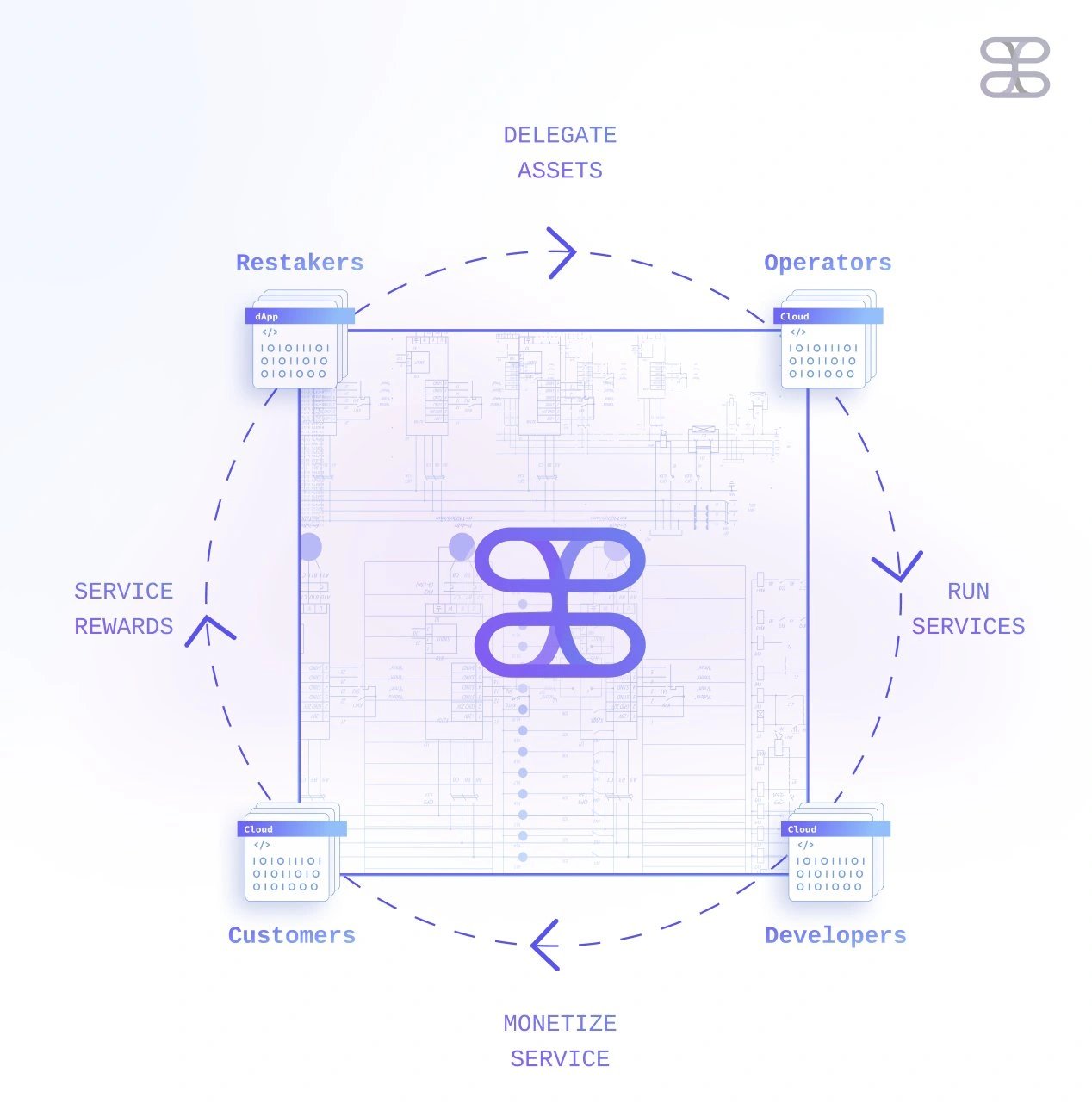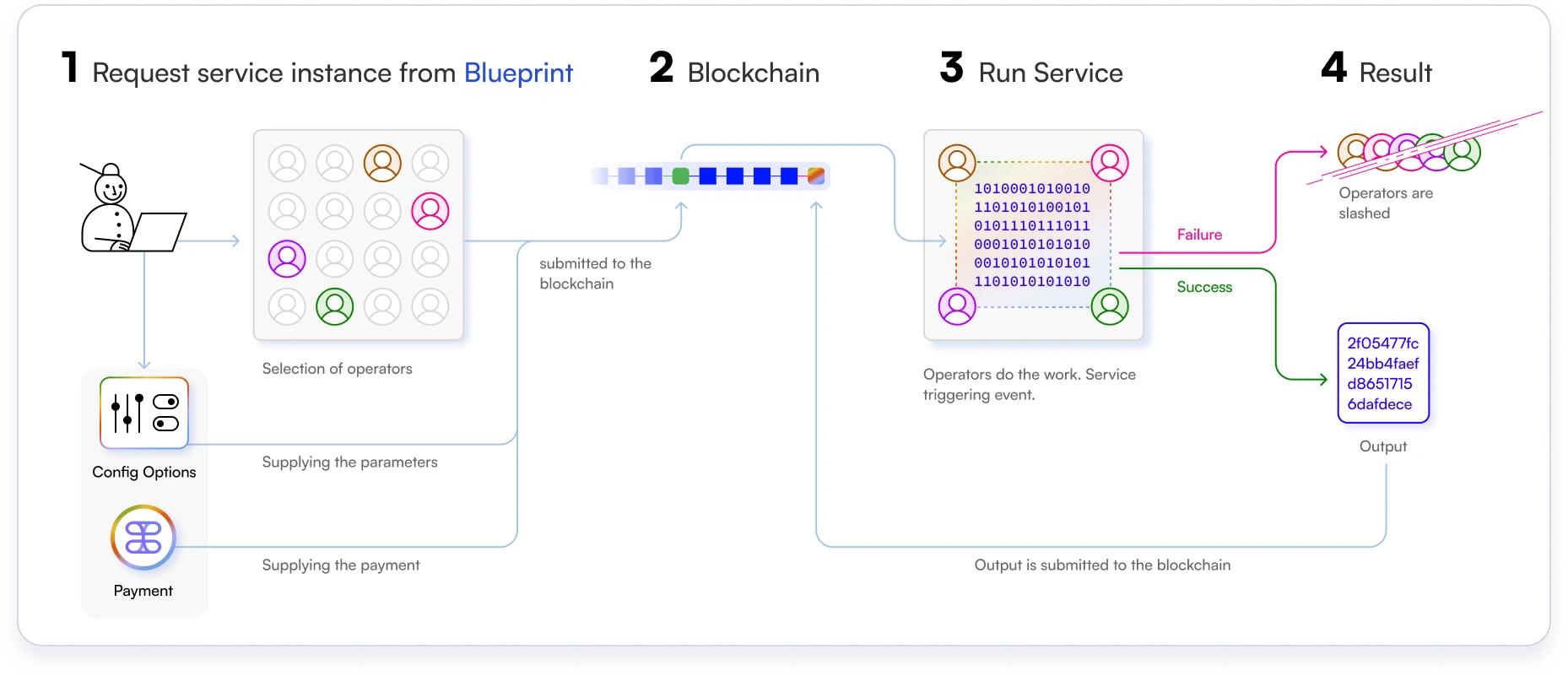위키 구독하기
Share wiki
Bookmark
Tangle Network
Tangle Network
Tangle Network는 안전하고 분산된 인프라 서비스를 제공하는 블록체인 플랫폼입니다. 개발자와 커뮤니티가 관리하는 분산형 클라우드 인프라로 기능합니다. 이 플랫폼은 고급 암호화 기술과 재스테이킹 메커니즘을 통합하여 안전하고 분산된 프레임워크 내에서 혁신적인 솔루션 개발을 가능하게 합니다. [1]
개요
Tangle Network는 보안 및 모듈성에 중점을 둔 분산형 인프라 서비스를 제공하는 블록체인 플랫폼입니다. 이 아키텍처를 통해 개발자는 오라클, 브리지 및 제로지식 솔루션과 같은 애플리케이션을 위한 서비스 구성 요소 또는 Blueprint를 구축하고 결합할 수 있습니다. 재스테이킹 모델은 유용한 Blueprint를 만드는 개발자와 서비스를 보호하기 위해 자산을 스테이킹하는 운영자에게 보상을 제공하여 기여를 장려합니다. 주요 기능으로는 암호화 및 검증자 지원을 위한 적극적으로 검증된 서비스(AVS), 대체 가능한 자산으로 인프라를 보호하기 위한 권한 없는 재스테이킹, MPC 브리지 및 XCM과 같은 기술을 통한 상호 운용성, 그리고 이더리움 기반 도구 및 애플리케이션과의 원활한 통합을 위한 EVM 호환성이 있습니다. [2]

기능
Blueprint
Tangle Network의 Blueprint는 적극적으로 검증된 서비스(AVS) 또는 인스턴스에 대한 사양을 정의합니다. 개발자는 Gadget SDK를 사용하여 네트워크에 배포된 Blueprint를 생성합니다. 그런 다음 사용자는 이러한 Blueprint의 인스턴스를 생성할 수 있으며, 이는 Tangle 운영자가 운영합니다. 운영자는 청구 및 실행에 대한 TNT 토큰과 수수료를 받고, 개발자는 운영자 참여를 장려하기 위해 Blueprint에 추가 인센티브를 지정할 수 있습니다.
재사용 가능한 컴퓨팅 서비스를 위해 설계된 Blueprint 인스턴스는 사용자 또는 개발자가 지정한 다양한 기간 동안 실행될 수 있으며, 서로 다른 운영자와 재스테이킹된 자산에 의해 보호됩니다. 각 Blueprint에는 프로그램 바이너리와 출력 검증 및 오류 관리를 위한 스마트 계약이 포함되어 있으며, 네이티브, 가상 머신 또는 컨테이너화된 설정과 같은 실행 환경을 지정합니다. Gadget SDK는 Eigenlayer에서 직접 AVS를 구축하는 것도 지원하므로 개발자는 SDK의 기능을 활용하면서 서비스를 테스트하고 개선할 수 있습니다. [3]

인센티브
Tangle Network는 개발자가 소프트웨어를 Blueprint로 배포하고 사용료 및 보상을 통해 수익을 창출할 수 있도록 하는 소프트웨어 수익 창출 플랫폼을 제공합니다. 고객이 Blueprint의 인스턴스를 생성하면 수수료는 개발자(50%), 운영자 및 재스테이커(30%), 그리고 Tangle 프로토콜 재무부(20%)에 분배되어 균형 잡힌 인센티브와 플랫폼 지속 가능성을 보장합니다. 이 네트워크는 거래 수수료, 지분 증명 보상 및 재스테이킹 인센티브라는 세 가지 핵심 경제 메커니즘에 의존합니다. TNT는 EVM 실행 및 Blueprint 작업을 포함한 거래의 주요 자산이며, 채택을 장려하기 위한 초기 수수료 보조금이 있습니다. 지명된 지분 증명 합의 메커니즘은 검증자와 지명자에게 보상을 제공하며, 네트워크 참여자에게는 약 4~5%의 APY가 제공됩니다. 재스테이킹 시스템을 통해 TNT 예치 및 Blueprint 인스턴스를 유지 관리하는 운영자에 대한 성과 기반 보상을 통해 수익을 얻을 수 있습니다. 개발자는 프로토콜의 경제 구조와 일치하면서 보안을 강화하고 수수료 할당을 사용자 지정할 수 있습니다. [4]
잘못된 내용이 있나요?
